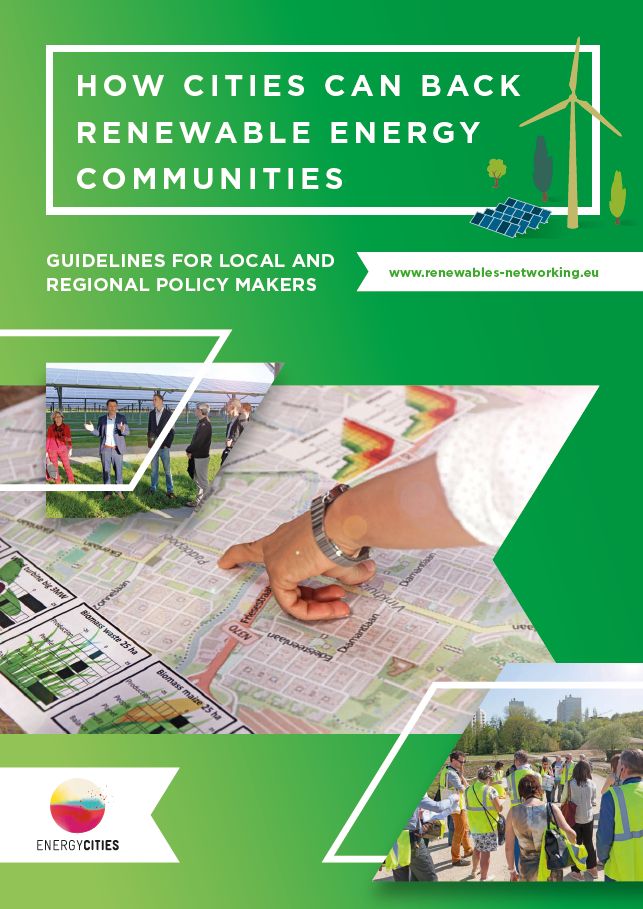How cities can back renewable energy communities
Guidelines for local and regional policy makers

Energy Cities is a member of the Renewables Networking Platform (RNP), a multi-level governance discussion project funded by the European Commission.
Its aim is to analyse and boost renewable energy policies by connecting relevant European, national, regional and local players.
Energy Cities, the European association of local authorities in energy transition, supports this project by connecting and guiding cities in scaling up renewable energy solutions on their territories, ultimately contributing to the target of a 32% share of renewable energy in the EU’s gross final consumption by 2030.
Community energy is now backed by new “European rights”, following the institutional agreement around the new legislative framework for energy in Europe (the Clean Energy for all Europeans Package). According to the framework, citizens and energy communities across the EU will be able to easily invest in renewables and benefit from the energy transition.
Their rights to produce, consume, sell and store energy are now clearly spelled out in EU legislation.
What better time than now for local authorities to be more involved in community energy projects? All over Europe, many cities have already been testing multiple ways to initiate, support and facilitate such projects. With this document, Energy Cities aims to showcase their actions, but also to identify existing models of cooperation.
We hope to inspire and provide guidance for local and regional policy makers willing to team up with their citizens, to move forward the energy transition of their communities.
The scottish model
Explicitly mentioning support for community energy in policy strategies makes a crucial difference. At the national level, Scotland provides one of the most striking examples of such a target-setting policy for community energy scale-up. In 2011, the government pledged to reach 500 MW of “locally- and community- owned” installed renewable energy sources by 2020.
Four years later in 2015, reports already indicated that the target had been exceeded, demonstrating the effectiveness of such a commitment, as it led the Scottish authorities to adopt a set of corresponding technical and financial support instruments. Building on this momentum, the government updated its 2020 target to 1 GW and pledged to reach a total to 2 GW of local and community energy installations by 2030. “Our ambition remains to ensure that, by 2020, at least half of newly consented renewable energy projects will have an element of shared ownership », says the government policy statement on the matter. Interestingly, this example inspired the government of Wales which also set a target for locally and community-owned renewable electricity by 2030.
The “Decidim” digital particpation platform in Barcelona
Decidim is a collaborative project which encourages citizens of Barcelona to use a digital, open-source participatory platform to suggest, debate, comment and back new proposals for the city. The platform is a concrete output of the 2015-2019 municipal plan called “73 neighbourhoods, one Barcelona, Towards the city of rights and opportunities” and which gathered the input of some 40 000 people. Catalonia’s first renewable energy cooperative, Som Energia, has used the Decidim platform to host its 2018 General Assembly and various debates with cooperative
members and interested citizens, including some 3 500 participants and recording some 1 300 votes.
The “Klimaatakkoord” – Participative energy and climate planning in the Netherlands

Conclusion
EU member states should thus make sure their cities have the right human resources, legal competences, technical expertise and financial leverage to usher in new forms of governance models in the energy system. Setting a high level target for local and community energy ownership of renewable energy capacity, as was done in Scotland, is an efficient way of ensuring the corresponding enabling framework is put in place. National Energy and Climate Plans, due to be submitted by the end of 2019, should provide the perfect opportunity to plan future energy scenarios with due consideration of these local movements and in cooperation with them.
